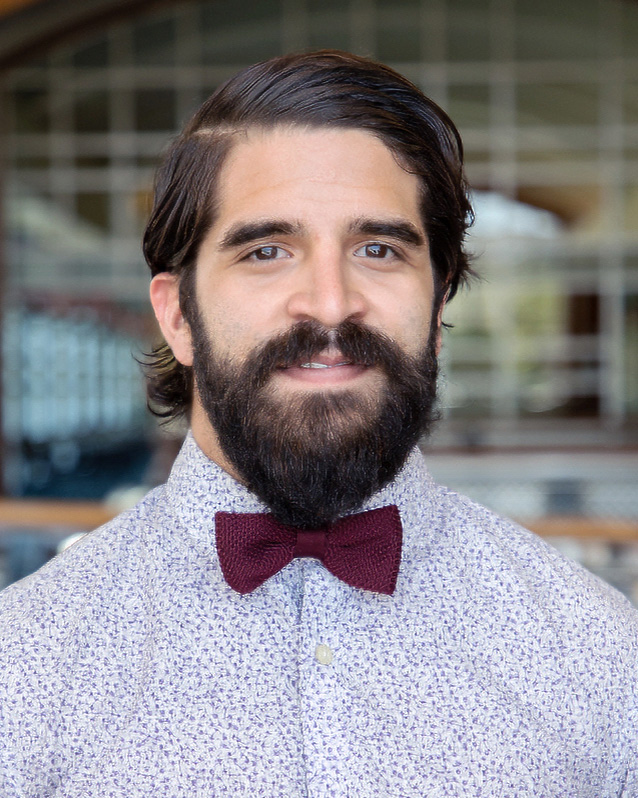Fernando Flor Researching in France, Awarded Postdoc at Yale
Fernando Flor’s natural curiosity has propelled many of his pursuits in physics. What began as an interest in theoretical physics during his undergraduate studies became work toward a full-fledged Ph.D. in physics, and now, a postdoctoral fellowship at Yale University.

However, Flor said his success would not have been possible without the help from his Ph.D. advisor, Rene Bellwied, M.D. Anderson professor of physics, and his academic community at the University of Houston’s Department of Physics.
“Since I joined Professor Bellwied’s Experimental Heavy Ion Physics group, I have received an insurmountable amount of support and knowledge,” said Flor, who will complete his Ph.D. at the end of 2021. “I had academic, financial and intrapersonal backing from my group and the physics department at UH. I will treasure my experience within the department for the rest of my life and will fully correlate the success of my academic path to Professor Bellwied’s group and the opportunities arising from it.”
He has spent the last four months at the Hubert Curien Pluridisciplinary Institute at the University of Strasbourg in France as part of his Fulbright Research Award. His award expires in February. The following month, his National Science Foundation Mathematical and Physical Sciences Ascending Postdoctoral Research Fellowship begins.
The fellowship enables a student to be a postdoctoral researcher at a university of his or her choice for up to three years, fully funded. The highly competitive selection process requires students not only to write a proposal but to also obtain letters of support from their new mentors at their universities of choice.
“Fernando's success is based on a unique mix of genuine scientific curiosity coupled with a bright mind and a tremendous work ethic,” said Bellwied. “He will go far because what drives him is his desire of fundamental knowledge.”
Flor and Jamie Stafford, also a UH physics Ph.D. student, received the NSF fellowships this year.
Flor in France
In France, Flor has studied under the mentorship of professor Boris Hippolyte, describing rare particle formation in the early universe with statistical thermodynamics models.
In collaboration with UH, “we’re modifying and developing a statistical thermal model that we can apply onto experimental data from ALICE, A Large Ion Collider Experiment, at CERN in Geneva, Switzerland to be able to replicate the particle yields our detectors detect,” said Flor.
Researchers at CERN place nuclear particles in a circular accelerator. One ring of the accelerator moves the particles in one direction and another ring moves them in the opposite direction. At certain points in the accelerator, the particles collide at high speeds, close to the speed of light, and these are known as relativistic heavy ion collisions, Flor explains.
These collisions generate enough energy that the original state of the particles is disintegrated, and additional particles are formed. The additional particles interact until they no longer generate new particles. At some point, the newly generated particles interact with the detectors, the data is stored and software techniques reconstruct what was seen, along with what particles were generated through these collisions.
Flor describes his experience thus far in France as fantastic.
“Since I arrived, everybody has been welcoming, and it feels as if the people here are part of my family, just as the people in Houston are,” said Flor. “There was not too much of a culture shock when I arrived, and I think it’s due to how hospitable people at the university and lab have been.”
Layers of Flavor Hierarchy
The doctoral candidate’s dissertation consists of using a theoretical approach through the statistical thermal model to test whether physicists can use a model to predict particles that will be detected.
“We’re trying to use a statistical model onto which we feed experimental yield data,” Flor said, “to basically run an algorithm so that we generate a list that tells us how many other particles we’re going to generate.”
The difference between Flor and Bellwied’s current technique and the typical approach, is they believe that as the universe continued to evolve, some particles froze out at one temperature and others continued to generate other particles, until they eventually froze out as well.
“We call this a flavor or temperature hierarchy in the chemical freeze out,” Flor said.
For Flor’s postdoc at Yale, he will be working in the Wright Laboratory under the supervision of Helen Caines, professor of physics. While he will not be changing fields completely, he will join the STAR experiment at the Relativistic Heavy Ion Collider at Brookhaven National Laboratory in Upton, New York.
“In the postdoc, what I would want to do is work on software development for particle identification, directly from the experiment at the Relativistic Heavy Ion Collider,” said Flor. “It would consist of analyzing data to reconstruct heavier particles at lower collision energies than those generated by ALICE. In principle, this could be applied back to the thermal model and adds another layer to the flavor hierarchy. Rather than being two temperatures, potentially collecting more data could show us that it might be the case that there’s three or more. I believe a cross-comparison between the experimental data collected by ALICE and STAR is necessary to gain a better understanding of matter formation in the early stages of our Universe.”
His intent for the postdoctoral fellowship is for it to not only serve as a continuation of his doctoral work but to also provide an inclusive pedagogical platform for enthusiastic undergraduate and graduate students within the experimental heavy ion physics community.
Receiving accolades and funding from both Fulbright and the National Science Foundation all feel like a dream to Flor.
“I’m still waiting to wake up and realize it was all a dream, but in fact it’s not,” he said. “It’s a good point to use this opportunity as a vehicle to start giving back just as I have been given by the people around me.”
- Rebeca Trejo, College of Natural Sciences and Mathematics